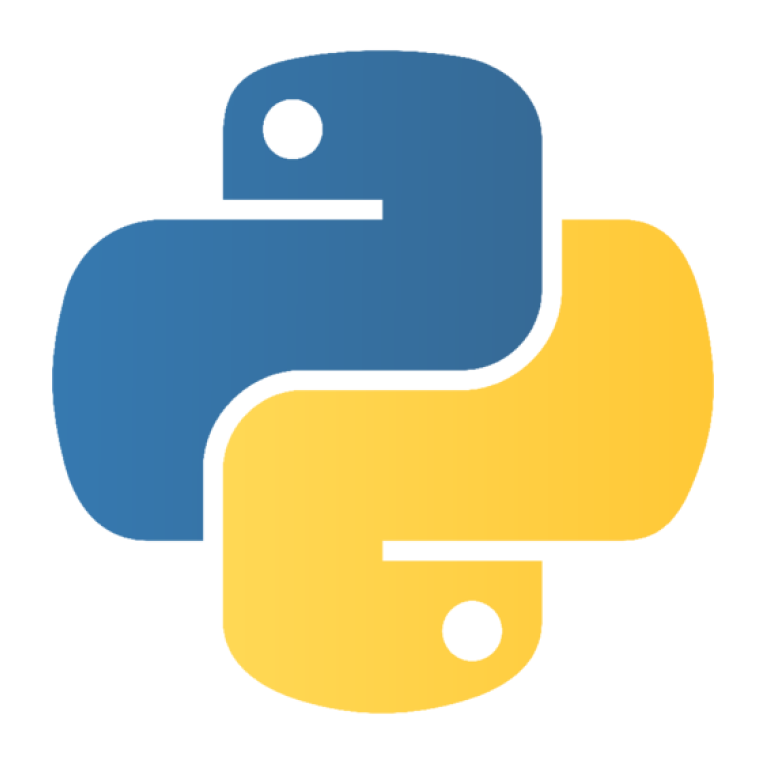Python
– Offline
- 7500/-
Python is a popular programming language that you can learn to build projects. This course provides essential training for those who wants to make their career in tech industry.
Courses Includes
Who Can Learn ?

Enthusiasts

School Students

Engineer Students

Working Professionals
Technologies and Tools

VS Code

Core Python

Python
Duration
- Course Hours: 70hrs
- Course Duration: 1 month
Pre-requisties
- Basic Knowledge of Computer
Payments Modes
- Prepaid Payment
Course Curriculum
- Overview of Python and its applications.
- Installing Python and setting up a development environment.
- Installation of Visual Studio Code
- Setting up VS Code for Python development
- Creating a new Python Script (.py) in VS Code
- Setup Integrated Terminal in VSCode
- Install Additional Packages or Libraries (Optional)
- Overview of syntax in Python
- Introduction to data types in Python
- Comments in python
- String Data Type
- List Data Type
- Tuple Data Type
- Dictionary Data Type
- Set Data Type
- Introduction to Operators in Python
- Arithmetic Operators in Python +, -, *, /, //, %, **
- Assignment Operators =, +=, -=, *=, /=, //=, %=
- Comparison Operators ==, !=, <=, >=, <, >
- Logical Operators AND, OR, NOT
- Bitwise Operators &, |, ^, ~, <<, >>
- Identity Operators is, is not
- Membership Operators in, in not
- Escape keyword in python
- String Declaration and Initialization
- String Concatenation
- String Indexing and Slicing
- String Length & Formatting
- Formatted String Literal (f-strings)
- str.format() method
- %-formatting
- String Methods Overview
- len()
- capitalize()
- casefold()
- center(width[, fillchar])
- lower()
- upper()
- strip()
- split()
- join()
- replace()
- find() and index()
- count(sub[, start[, end]])
- join(iterable)
- startswith()
- endswith()
- replace(old, new[, count])
- isalpha(), .isdigit(), .isalnum(), .isspace()
- Unicode and Encoding/Decoding
- Creating Lists
- Accessing Elements
- append()
- extend()
- insert()
- remove()
- index()
- sort()
- List comprehension
- Indexing and Slicing
- Mutable and Immutable elements of List
- Nested Lists
- List_of_lists
- Hardcopy, shallowCopy and DeepCopy
- Introduction to Tuples
- Creating Tuples
- Tuple Operations
- count(value)
- index(value[, start[, end]])
- Iterating Over Tuples
- Tuple Methods
- Tuple Comprehensions
- Creating and Modifying Sets
- Difference between list and set
- Iteration Over Sets
- Set Operations (Union (|), Intersection (&))
- Python Frozen set
- Creating and Accessing Dictionaries
- Iterating Over Dictionaries
- Dictionary Methods
- Nested Dictionaries
- If Statement
- If-Else Statement
- If-elif-else
- Nested If Statements
- Elif Statement
- Dictionary Mapping
- Short hand Statement
- Truthy and Falsy Values
- Introduction to Loop Control Statements
- for loop
- while loop
- Nested loops
- Branching statements
- Break Statement
- Continue Statement
- Pass
- Return
- Defining Functions
- Syntax of Function Definition
- Parameters and Arguments
- Return Statement
- Calling Functions
- Function Arguments(Positional, keyword, default)
- Scope of Variables(Local, Global):
- Anonymous Functions (Lambda Functions)
- Function Decorators
- Generator Functions
- Numeric Functions (abs(), max(), min(), pow(), round())
- Conversion Functions (int(), float(), str())
- Sequence Functions: (len(), sorted(), sum())
- Type Checking Functions (type(), isinstance())
- Input and Output Functions:( input(), print())
- Container Functions: (all(), any())
- String Functions: (str.lower(), str.upper(), str.split())
- Pre-built Modules in Python (math ,random ,datetime ,os ,sys ,json ,csv)
- Importing Modules
- Module alias / Renaming module
- Built In properties of module
- Creating User-Defined Modules
- Importing User-Defined Modules
- Importing Entire Module
- Importing Specific Functions or Classes
- Importing with Alias Names
- Introduction to File Handling
- Opening and Closing Files: open(),close()
- Reading data from file:read(),readline(),readlines()
- Writing data into file:write()
- File Position and Seeking:seek()
- Working with Text Files
- Error Handling in File Operations
- File Management and Manipulation
- Working with File Paths and Directories
- Introduction to OOP
- Procedural v/s Object oriented programming
- Definition of classes and objects
- Creating Objects (Instances) of a Class
- How to define class in python
- Constructor and Destructor: __init__ and __del__
- Types of variables – instance variables, class variables.
- Types of methods – instance methods, class method, static method
- ‘self’ reference variable
- Access modifiers
- Encapsulation(Data Binding)
- Inheritance
- Polymorphism
- Overriding
- Overloading
- Abstraction
- Interfaces and Abstract Classes
- What is Exception?
- Why exception handling?
- Syntax error v/s Runtime error
- Exception codes – AttributeError, ValueError, IndexError, TypeError
- Handling exception – try except block
- Try with multi except
- Handling multiple exceptions with single except block
- Finally block
- Try-except-finally
- Try with finally
- Case study of finally block
- Library Management System
- Rock Paper Scissor
- Calculator
Validate Your Skill
Earning a certificate from the Python Course validates your programming skills and hands-on experience with Python, enhancing your resume and making you more appealing to employers or educational institutions. This certification can advance your career by showcasing your commitment and practical expertise, while also connecting you with a network of Python professionals, opening doors for future opportunities.

Earning a certificate from the Python Course validates your programming skills and hands-on experience with Python, enhancing your resume and making you more appealing to employers or educational institutions. This certification can advance your career by showcasing your commitment and practical expertise, while also connecting you with a network of Python professionals, opening doors for future opportunities.
Learning Outcomes
- Understand Python fundamentals, including syntax, data types, and basic operations.
- Write and execute Python programs for a range of applications and tasks.
- Utilize control flow statements (if-else, loops) to manage program logic.
- Work with functions and modules to organize and reuse code efficiently.
- Handle and manipulate data using Python libraries such as Pandas and NumPy.
- Implement object-oriented programming principles in Python, including classes and inheritance.
- Manage files and perform I/O operations for data processing and storage.
- Develop and debug Python applications, applying best practices for coding and error handling.


Python
Duration
- Course Hours: 70hrs
- Bootcamp Duration: 1 month
Pre-requisties
- Basic Knowledge of Computer
payments Modes
- Prepaid Payment
